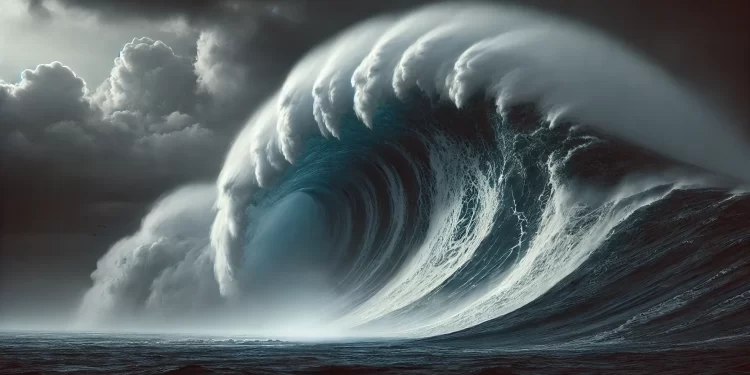In November 2020, an extraordinary natural event unfolded off the coast of British Columbia: a lone buoy recorded a massive rogue wave, towering 17.6 meters (58 feet) high. This unexpected phenomenon was officially confirmed in February 2022 as the most extreme rogue wave ever documented, explains Science Alert.
This rare event is believed to occur only once every 1,300 years, and if not for the buoy’s presence, the occurrence of this massive wave might have gone unnoticed.
Rogue Waves Become a Scientific Reality
For centuries, rogue waves were considered little more than maritime folklore. Sailors would speak of massive walls of water appearing out of nowhere, but their stories were often met with skepticism. That changed in 1995, when a massive wave, measuring nearly 26 meters (85 feet), struck an oil platform about 160 kilometers (100 miles) off the coast of Norway. This event, now known as the Draupner wave, shocked the scientific community by defying existing wave models. The once-mythical phenomenon became an undeniable reality.
Since then, scientists have recorded dozens of rogue waves worldwide, including in lakes. The wave near Ucluelet, Vancouver Island, wasn’t the tallest ever recorded, but its relative size compared to the waves surrounding it set it apart.
What Makes a Rogue Wave?
Rogue waves are defined as waves that are more than twice the height of the waves around them. For example, the Draupner wave reached 25.6 meters, while nearby waves were only 12 meters high. By comparison, the Ucluelet wave was nearly three times the height of its neighboring waves, making it, proportionally, the most extreme rogue wave ever observed.
Physicist Johannes Gemmrich from the University of Victoria explained in 2022, “Proportionally, the Ucluelet wave is likely the most extreme rogue wave ever recorded. Only a few rogue waves in high sea states have been observed directly, and nothing of this magnitude.”
Unlocking the Secrets of Rogue Waves
Scientists are still working to understand how rogue waves form. Current research focuses on real-time measurement of these waves and the development of models to predict their occurrence. The Ucluelet wave was recorded by a buoy deployed by MarineLabs, a research organization dedicated to studying marine hazards.
While many rogue waves occur far offshore, they still pose a significant threat to marine operations, wind farms, and oil platforms. In extreme cases, they can even endanger coastal communities and beachgoers. Fortunately, neither the Ucluelet nor the Draupner wave caused significant damage, but other rogue waves have had devastating consequences.
Some ships that disappeared in the 1970s, for example, are now believed to have been destroyed by rogue waves. The debris found afterward suggests that immense waves were likely the cause.
A Changing Ocean and the Future of Rogue Waves
A 2020 study warned that wave heights in the North Pacific could increase due to climate change. This means that while the Ucluelet wave holds the current record, it may not remain the most extreme for long. As wave heights continue to rise, so too does the risk posed by rogue waves to both marine operations and coastal communities.
MarineLabs CEO Scott Beatty emphasized the importance of coastal intelligence, stating, “We are aiming to improve safety and decision-making for marine operations and coastal communities through widespread measurement of the world’s coastlines. Capturing this once-in-a-millennium wave, right in our backyard, is a thrilling indicator of the power of coastal intelligence to transform marine safety.”
The discovery of the Ucluelet rogue wave highlights the importance of ongoing research and advanced coastal monitoring systems. As we face a future with increasingly unpredictable ocean conditions, understanding rogue waves will be crucial in safeguarding marine and coastal environments.











